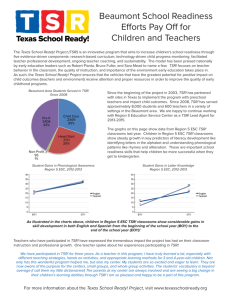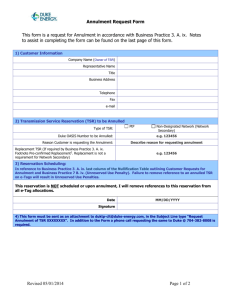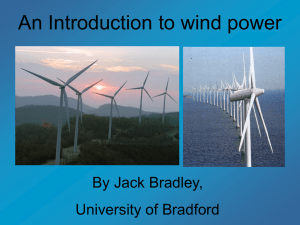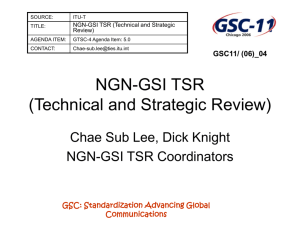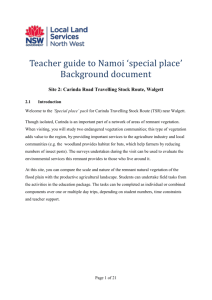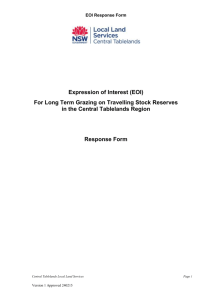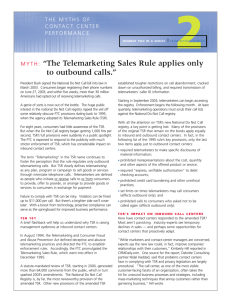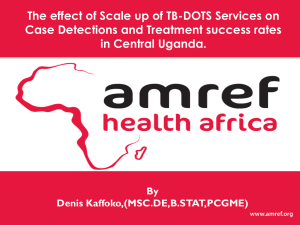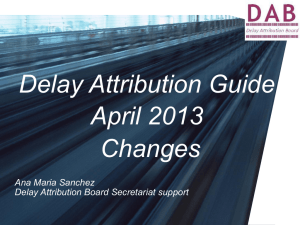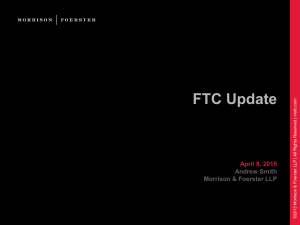Site 2: Carinda Road Travelling Stock Route, Walgett
advertisement
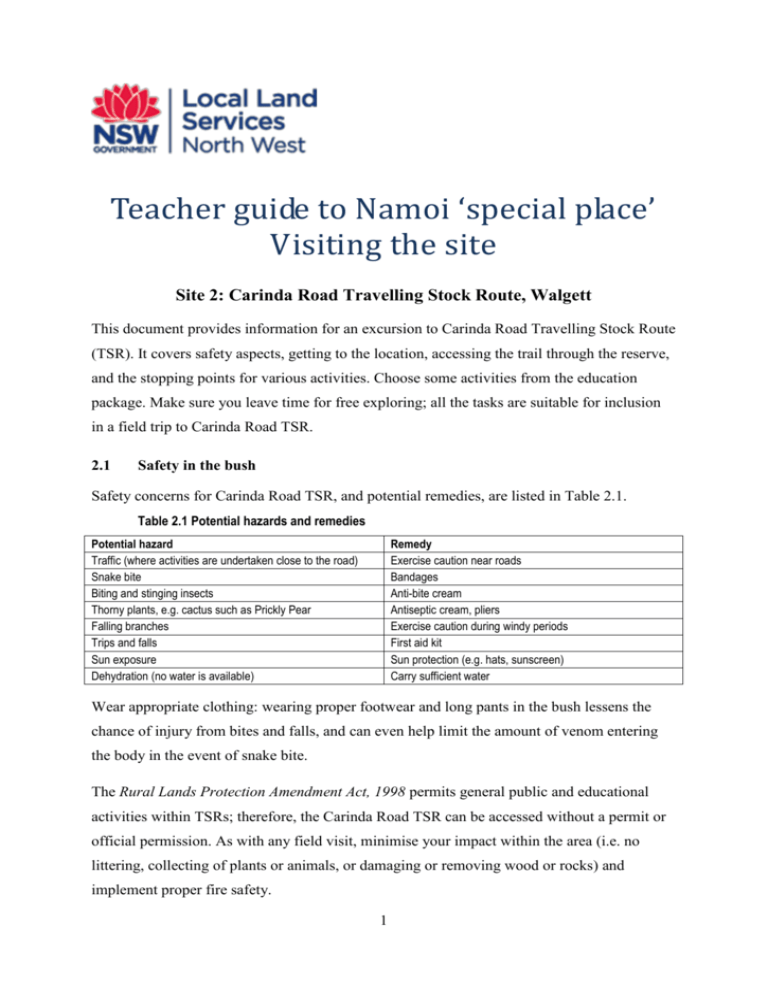
Teacher guide to Namoi ‘special place’ Visiting the site Site 2: Carinda Road Travelling Stock Route, Walgett This document provides information for an excursion to Carinda Road Travelling Stock Route (TSR). It covers safety aspects, getting to the location, accessing the trail through the reserve, and the stopping points for various activities. Choose some activities from the education package. Make sure you leave time for free exploring; all the tasks are suitable for inclusion in a field trip to Carinda Road TSR. 2.1 Safety in the bush Safety concerns for Carinda Road TSR, and potential remedies, are listed in Table 2.1. Table 2.1 Potential hazards and remedies Potential hazard Traffic (where activities are undertaken close to the road) Snake bite Biting and stinging insects Thorny plants, e.g. cactus such as Prickly Pear Falling branches Trips and falls Sun exposure Dehydration (no water is available) Remedy Exercise caution near roads Bandages Anti-bite cream Antiseptic cream, pliers Exercise caution during windy periods First aid kit Sun protection (e.g. hats, sunscreen) Carry sufficient water Wear appropriate clothing: wearing proper footwear and long pants in the bush lessens the chance of injury from bites and falls, and can even help limit the amount of venom entering the body in the event of snake bite. The Rural Lands Protection Amendment Act, 1998 permits general public and educational activities within TSRs; therefore, the Carinda Road TSR can be accessed without a permit or official permission. As with any field visit, minimise your impact within the area (i.e. no littering, collecting of plants or animals, or damaging or removing wood or rocks) and implement proper fire safety. 1 2.2 Tracking, travel and amenities Tracking Download the Carinda TSR.kmz file to your smart device (see Task 1.1 in Activity 1 for instructions for using Google Earth). Use your smart device to track your location as you approach the TSR and undertake the activities (the Carinda TSR.kmz file includes relevant map locations). When you set out, set the device to locate your position. On the journey, pass the device to a student and ask the student to navigate to your first stop. Internet access may not be available in all the locations at the site, so take a printed copy of this document on the field trip, and refer to Table 2.2 for information about stops (S), points of interest (POIs) and suggested activities or tasks. Directions and parking From Walgett, take the Carinda–Walgett Road south for about 5 km. Carinda Road TSR is on the left side of the road. Figure 2.1 Google map of directions to drive from Walgett to Carinda Road TSR 2 Safe parking (in dry conditions) is available on the verge of the tar roadside adjacent to S1. Use your smart device to see an overview of the parking areas and stops. Since Carinda Road TSR is located on low-lying land with a cracking-clay soil, wet conditions are likely to make the site extremely boggy and inaccessible. Parking on the road verge could also pose a risk if there is rainfall. Getting to the study site Two study areas are included within the Carinda Road TSR, located at the western end of the TSR, close to the Carinda–Walgett Road. It is best to walk between the two study areas and back to the pickup point (S1 – S2 – POI1 – S3 pickup point). However, in dry conditions, it may be possible to drive on a track along the northern boundary. Check these locations on your smart device and plan your trip based on your pre-excursion visit. Amenities There are no amenities at Carinda Road TSR. The closest public toilets are located within the Rotary Park on the southern outskirts of Walgett (refer to Carinda TSR.kmz file). Bring plenty of water – no water is available at Carinda Road TSR. 2.3 Undertaking activities During the trip to the TSR, heading south along the Carinda–Walgett Road, note the sparse roadside vegetation within a cleared agricultural landscape. The TSR between Walgett and the Carinda Road TSR is narrow (~ 60 m). Consider driving a few kilometres past S1 as the TSR is much wider (~ 500 m) at this point. Observe the difference in vegetation. Carinda Road TSR is relatively weed free; however, the roadsides around Walgett are generally dominated by weeds. During the trip to the survey site look for weeds such as noogoora burr (along wet areas and drains), buffel grass (naturalised pasture grass), African lovegrass, and African boxthorn. Question 2.1: How might weeds disperse into the native vegetation? Answer: Water, wind, animals, vehicles, roadside slashing and illegal dumping. Question 2.2: Where are most of the weeds concentrated and why? Answer: Weeds mostly occur along the edges of the areas of native vegetation. They are easily dispersed from disturbed areas, being deposited along tracks from vehicles or illegally dumped along tracks. Question 2.3: What can you do to help stop the spread of weeds? 3 Answer: Identify and report any sightings to your local council, and keep your vehicles clean to avoid spreading weed seeds. Question 2.4: Why are Shield Shrimps sometimes called living fossils? Answer: Similar species have been found in rocks dating back 300 million years Question 2.5: What evidence is there that traditional Aboriginal life had a lower impact on the land than modern day land use methods? What was the key tool of the Aboriginal people? Answer: Scar trees are a result of where a traditional tool, shield, canoe etc was harvested from a tree. The tree is left in place to continue to live to provide other environmental services, from shade to fire wood and even oxygen to breathe. Modern European land use contrasts greatly in that vegetation is removed or greatly altered to provide a landscape suitable for purposes such as agriculture. Aboriginal knowledge of the landscape, seasons and bush food provided tremendous advantage for survival. Teacher note: The control and management of weeds could be part of a class discussion after the visit. Table 2.2 Stop (S) or point of interest (POI) Carinda Road TSR stops and points of interest Location Activities and tasks Parking area on road verge adjacent to S2a and S2b S1 S2a S2b Check your position on your smart device or printed copy Walk 30 m south-east to the weeping myall woodland EEC transect area (S2) Presently the labelled plants are limited to the transects, we can get back there and label those along the main track, probably pointless labelling randomly between transects. The GPS waypoints provided locate the white pegs for the beginning and end of each of the transects: 4 General discussion about the weeping myall woodland EEC and its protected status. Reinforce the difference in vegetation on the roadside here (i.e. more trees) compared to the other areas of roadside vegetation, pointing out that this is due to the existence of the wider roadside TSR. Start activities: • 1 (Task 1.5) random meander. Start completing the Random meander observation datasheet from Activity 1 – Record sheet; identify weeds and native plants using the pictorial guides and look for plants with labels (blue = exotic, yellow = native). • 6 (Task 6.6) Answer Question 2.4. Weeping myall woodland EEC Set up the transect between the posts. Start activities: • 2 (Task 2.2) • 3 (Tasks 3.3, 3.4) Begin Transect 1 (peg) End Transect 1 (peg) Walk about 500 m to S3 • 4 (Tasks 4.2, 4.3) • 5 (Tasks 5.2, 5.3) • 6 (Task 6.5). Potential site for Activity 7 (Tasks 7.3, 7.4) (Bird listening/‘Quiet’ site); however, complete this activity before setting up any transects, to minimise disturbance. S3a S3b The GPS waypoints provided locate the white pegs for the beginning and end of each of the transects: Begin Transect 1 (peg) End Transect 1 (peg) General discussion about the coolibah–black box woodland EEC and its protected status. Look for the differences between the coolibah and black box trees. Continue activities: • 1 (Task 1.5) • 2 (Task 2.2) • 3 (Tasks 3.3, Walk 450 m to POI1 3.4) • 4 (Tasks 4.2, 4.3) • 5 (Tasks 5.2, 5.3) • 6 (Task 6.5, 6.6). Potential site for Activity 7 (Tasks 7.3, 7.4) (Bird listening/‘quiet’ site). POI1 Scar tree Walk 700 m along the track running parallel with the boundary fence to S4 General observation Complete the ‘Traditional use of plants by Aboriginal Australians’ section of the Random meander datasheet. Continue activities: • 1 (Task 1.5) • 6 (Task 6.6). S4 Complete Activity 1 (Task 1.5) and Activity 6 (Task 6.6). Pick up point Notes: The stops and points of interest are marked on the Google Earth file Carinda Road TSR.kmz. Continue to use your smart device to track to your activity sites. Question 2.6: Are there benefits to having a wider vegetated area? Answer: Yes, these benefits include increased potential habitat and a greater ability to buffer impacts from outside (e.g. weeds); also, edge vegetation traps road dust. 5
